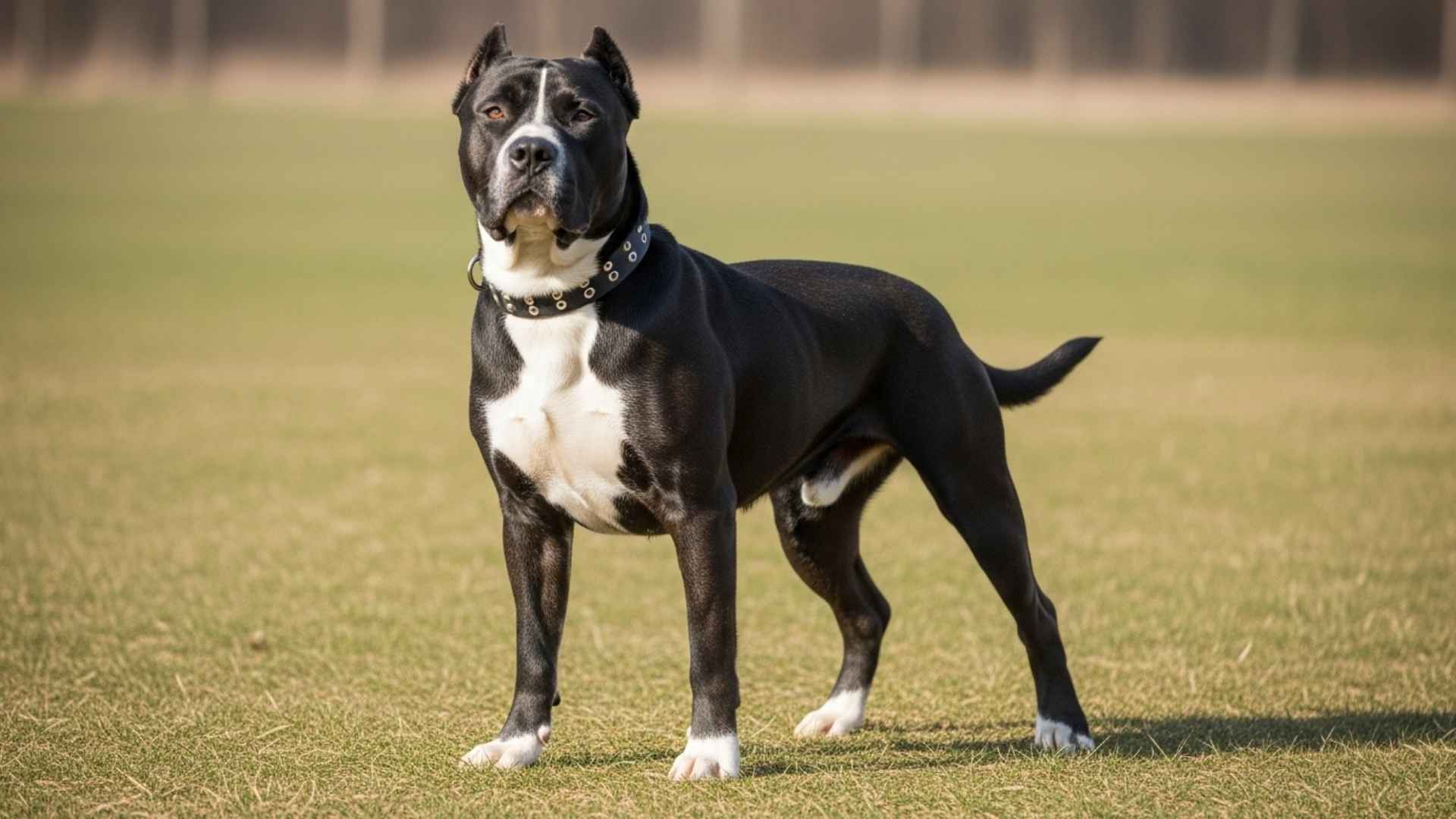When it comes to protection work, physical structure matters as much as temperament. Dogs with broad, strong hips possess the stability, power, and endurance needed for demanding tasks such as guarding property, assisting in law enforcement, or safeguarding their family. These physical traits, combined with the right instincts, allow them to respond quickly and effectively when needed.
Many of these breeds have been selectively developed over centuries, not only for their muscle and frame but also for loyalty, intelligence, and courage. Broad hips contribute to explosive drive and firm footing—key qualities when confronting potential threats. In the right hands, these dogs can balance fierce protection skills with a steady, trustworthy nature at home.
Today’s best protection breeds aren’t just guardians; they’re also family companions. With the right training, they can be gentle with children, sociable with friends, and alert to danger without being unnecessarily aggressive. This guide explores breeds whose physical build and temperament make them exceptional in both protection work and family life.
Dog Breeds With Broad Strong Hips For Protection Work
1. Belgian Malinois
The Belgian Malinois, also called the Mal, is a versatile working dog celebrated for its strength, agility, and intelligence. Standing 22–26 inches tall and weighing 40–80 pounds, this breed belongs to the Herding Group and typically lives 14–16 years.
Originating from Belgium, the Malinois was initially bred for herding but quickly gained recognition in military, police, and protection work due to its athletic build and sharp instincts.
Its square frame, broad and powerful hips, and muscular hindquarters give it explosive drive and exceptional stamina—perfect for demanding physical tasks.
Why They Excel in Protection Work
Highly trainable with a strong desire to work alongside their handler.
Exceptional speed and agility, aided by their balanced structure and powerful rear assembly.
Natural protective instincts make them reliable guard and service dogs.
Mals require extensive exercise and mental stimulation, making them best suited to experienced, active owners. Their signature rich fawn-to-mahogany coat with black mask and ears, paired with an alert, proud posture, gives them a striking and confident appearance. WebMD says they build strong bonds with their owners and strive to keep them happy.
Fun Fact: The Belgian Malinois is the preferred breed of the U.S. Navy SEALs, famously serving in high-profile missions, including the operation that located Osama bin Laden.
2. Rhodesian Ridgeback
The Rhodesian Ridgeback, also known as the African Lion Hound, is a powerful, athletic breed originally developed in southern Africa to track and corner lions. AKC says the Rhodesian Ridgeback is a versatile “Renaissance hound,” best known for the distinctive ridge of hair that grows backward along its back.
Standing 24–27 inches tall and weighing 70–85 pounds, Ridgebacks belong to the Hound Group and typically live 10–12 years. Their muscular build, particularly their broad and strong hips, provides exceptional speed, endurance, and stability—key traits for demanding protection work.
Why They Excel in Protection Work
Originally bred for courage and agility in dangerous pursuits.
Strong-willed and independent, requiring firm, consistent leadership.
Protective instincts paired with deep loyalty toward their family.
While they form strong bonds and can be affectionate with trusted people, Ridgebacks retain a high prey drive and a natural wariness toward strangers—making them formidable protectors. Proper early training and socialization are essential to balance their power with control.
Fun Fact: Despite their history with lions, Rhodesian Ridgebacks were bred to track and contain, never to kill, their quarry.
3. Doberman Pinscher
Also called the Dobie, Doberman Pinscher is a sleek, muscular working breed recognized for its speed, endurance, and unmatched guarding instincts.
Developed in Germany during the late 1800s by Karl Friedrich Louis Dobermann, this breed was originally created to protect its owner during tax collection rounds. PetMD says that as a large breed, the Doberman typically grows 24 to 28 inches tall and weighs between 60 and 100 pounds.
Dobermans belong to the Working Group and typically live 10–12 years. Their short, glossy coats come in striking shades of black, blue, red, or fawn, often accented with rust markings, and their wedge-shaped head gives them a noble appearance.
Why They Excel in Protection Work
Broad, strong hips provide powerful propulsion, essential for quick pursuit and agile movement.
High intelligence and loyalty make them both formidable protectors and trainable companions.
Naturally alert and fearless, yet capable of forming deep, affectionate bonds with family.
Renowned for their athleticism, Dobermans were chosen as the official dog of the U.S. Marine Corps during World War II, serving bravely in military roles.
Fun Fact: A well-conditioned Doberman on patrol is often enough to deter even the most determined intruder.
4. German Shepherd
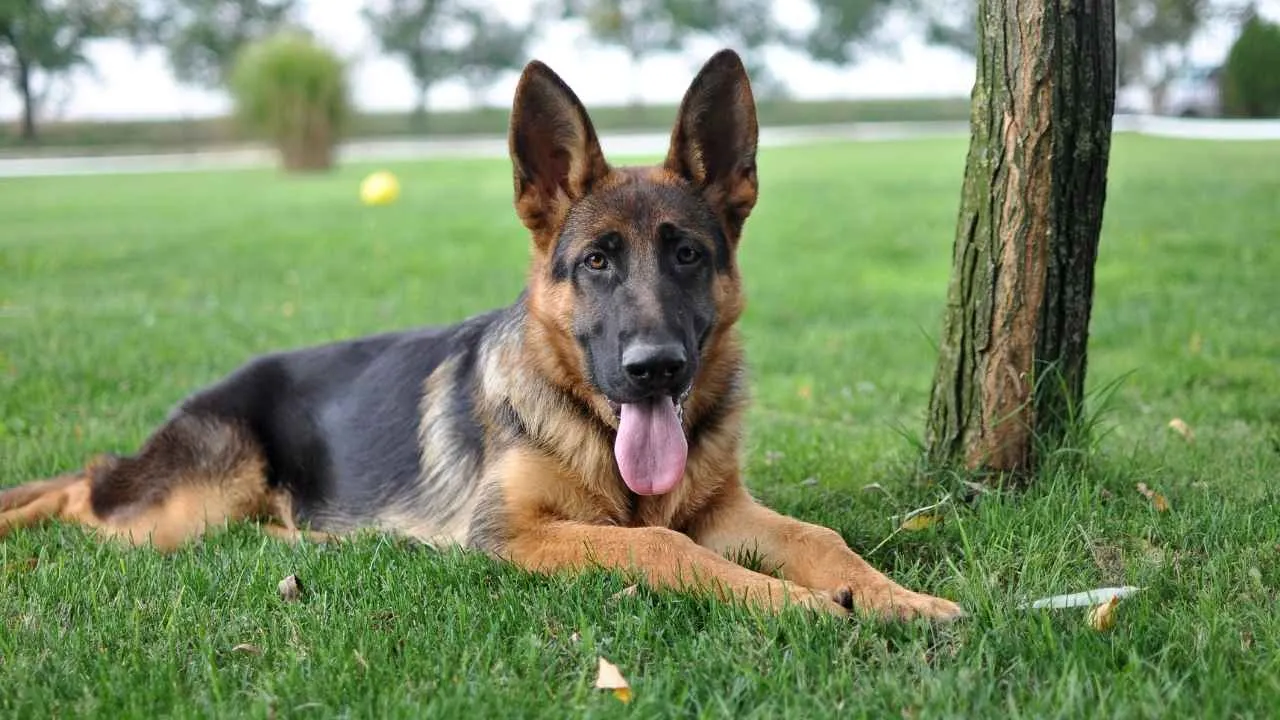
The German Shepherd Dog, also known as the Alsatian in some regions, is a large, agile working breed with a reputation for intelligence, loyalty, and versatility.
Standing up to 26 inches tall and weighing 50–90 pounds, this Herding Group member typically lives 9–13 years. Its balanced, muscular frame features broad, strong hips, providing the stability and drive essential for protection work, police duties, and search-and-rescue operations.

Why They Excel in Protection Work
Naturally protective, alert, and confident—ideal traits for guarding property and people.
Highly trainable with an exceptional ability to learn complex commands.
Strong hips and a powerful gait allow for quick pursuit and explosive movement when needed.
Originally developed in late 19th-century Germany to herd and guard sheep, the breed’s skill set quickly made it a favorite in military and law enforcement roles worldwide. While there is a certain aloofness with strangers, they are deeply bonded to their families, showing unwavering loyalty and courage.
Fun Fact: German Shepherds are among the most employed service dogs globally, excelling in fields from police K-9 units to guide dog work for the visually impaired.
5. Rottweiler
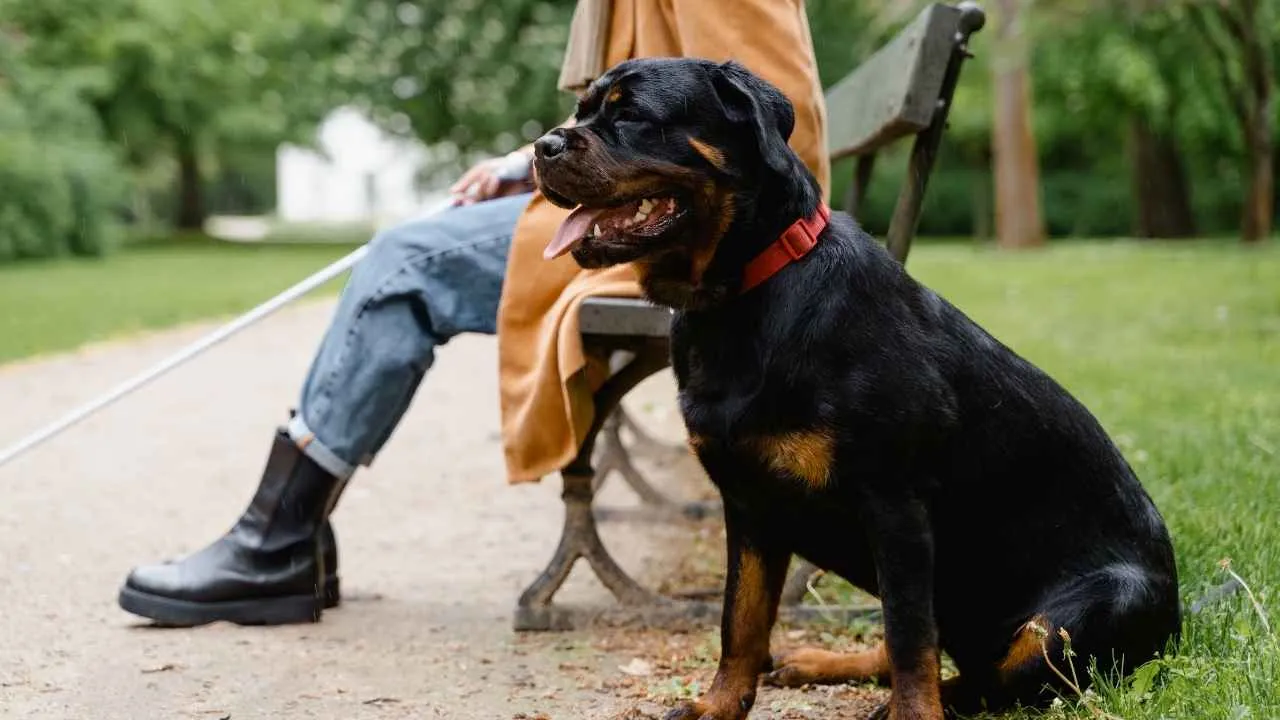
The Rottweiler, also called the Rottie, is a powerful working breed with origins tracing back to the mastiffs of the Roman legions. Males typically stand 24–27 inches tall and weigh up to 135 pounds, while females are slightly smaller.
With a lifespan of 9–10 years, Rottweilers belong to the Working Group in the American Kennel Club. Their distinctive look includes a glossy black coat with rich rust markings, a broad head, and heavily muscled hindquarters—perfect for driving power and stability during protection work.
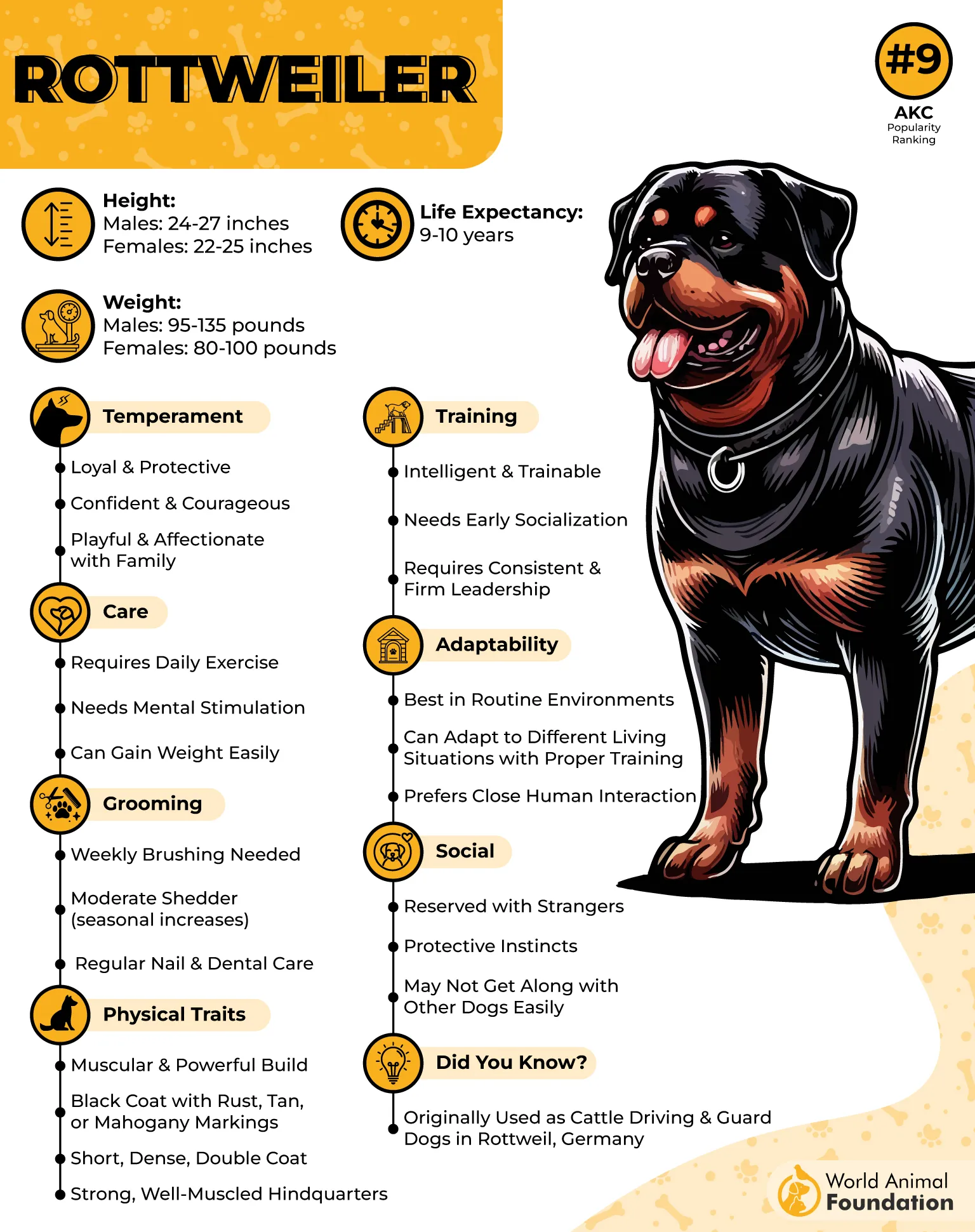
Why They Excel in Protection Work
Broad, strong hips give them impressive balance and agility when tackling demanding tasks.
Naturally territorial and alert, they instinctively recognize and guard what belongs to them.
Their calm, confident demeanor allows them to assess threats without unnecessary aggression.
Bred for herding and guarding, Rottweilers combine physical strength with remarkable loyalty. They bond deeply with their families, serving as both gentle companions and formidable protectors.
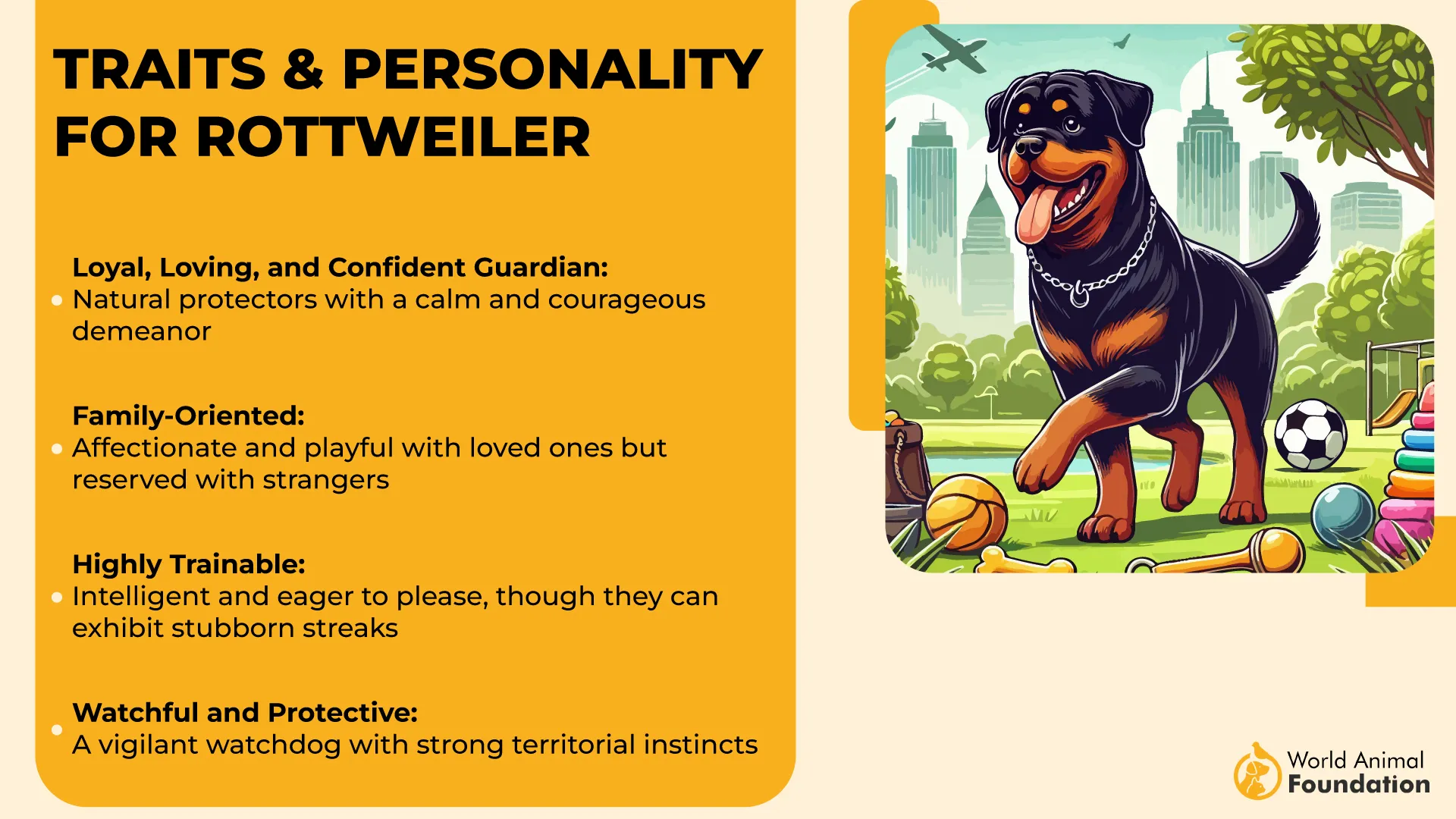
Fun Fact: The breed’s history as a cattle drover in Rottweil, Germany, gave it its name and cemented its reputation as one of the most reliable working dogs.
6. Saint Bernard

The Saint Bernard, also known as the Alpine Mastiff, is a massive working breed that originated in the Swiss Alps, where it was famously used by monks at the Great St. Bernard Hospice to rescue travelers lost in snowstorms. Males typically stand at least 27.5 inches tall at the shoulder, with females slightly smaller.
Their weight can range from 140 to over 180 pounds, supported by broad, powerful hips that contribute to their strength and stamina—ideal for pulling weight or navigating deep snow.
Their appearance is instantly recognizable: a massive head with a wrinkled brow, soulful dark eyes, and a thick, dense coat in shades of white with red, brindle, or brown markings. They belong to the Working Group and generally live 8–10 years.
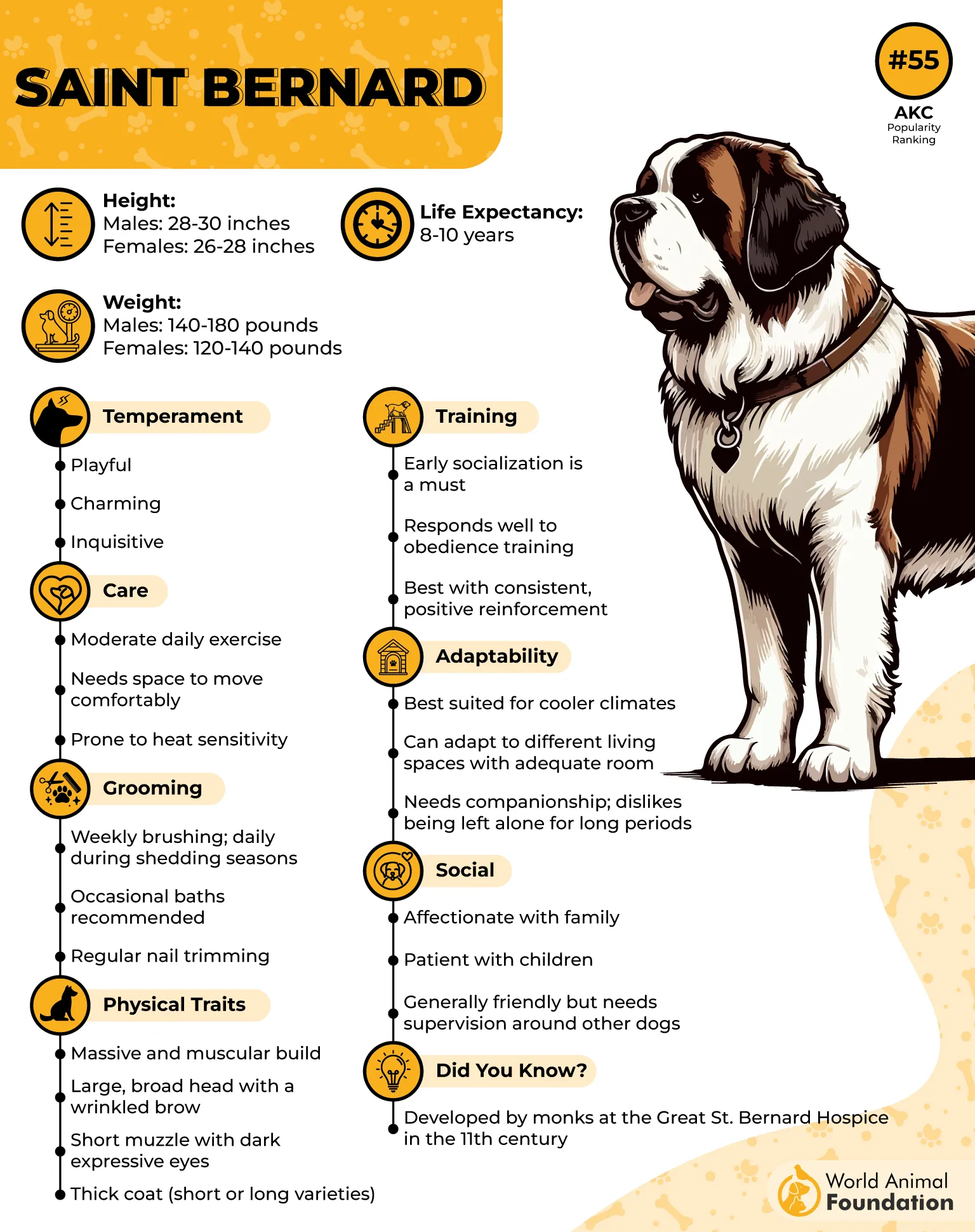
Temperament
Gentle yet watchful, Saint Bernards are loyal protectors who are especially affectionate toward children. They are patient, intelligent, and calm, but their imposing size alone can deter intruders.
While they have a natural guarding instinct, they are not prone to unnecessary aggression and respond best to consistent socialization and early training.
Fun Fact: Historically, Saint Bernards were equipped with small barrels of brandy around their necks during rescue missions, symbolizing their lifesaving role in the Alps.
7. Cane Corso
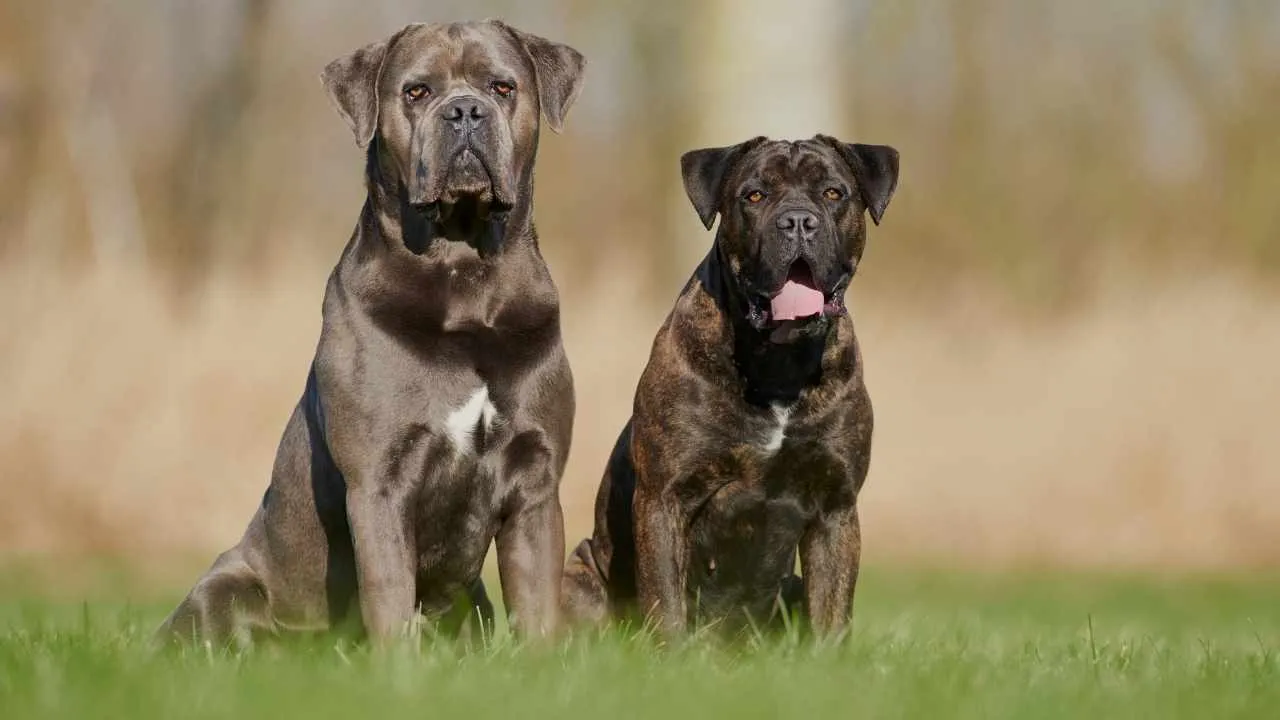
The Cane Corso (pronounced KAH-nay KOR-so), also known as the Italian Mastiff, is a large and powerful working breed from Italy with a history tracing back to ancient Rome.
Bred for guarding property, hunting large game, and serving as an all-around farm protector, this dog combines imposing physical strength with keen intelligence.
Standing 23.5–27.5 inches tall and weighing 80–120 pounds, the Cane Corso has a short, coarse coat that comes in shades like black, gray, fawn, red, or brindle, often with a black or gray mask. They belong to the Working Group in the American Kennel Club and live around 10–12 years.
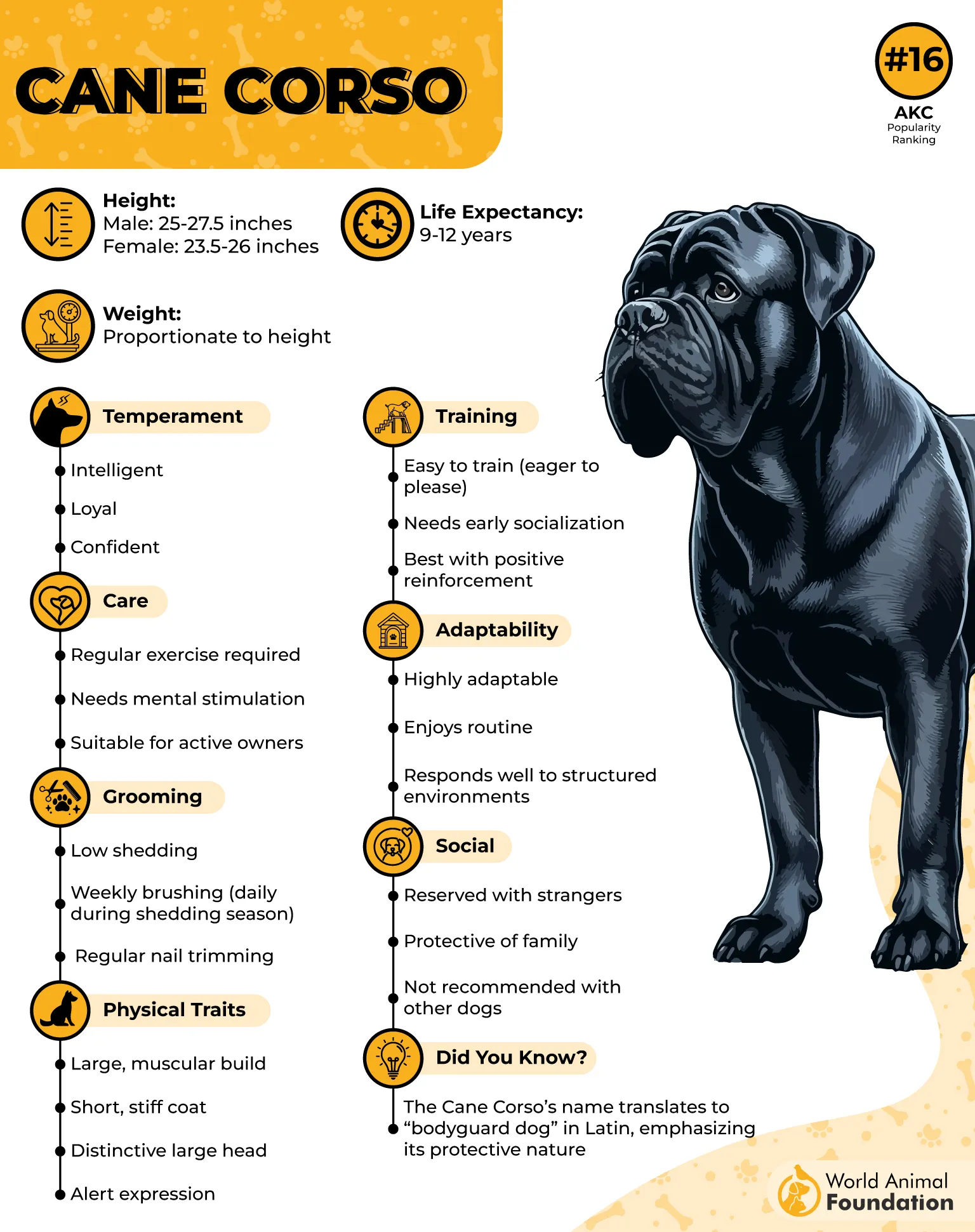
Why They Excel in Protection Work
Broad, muscular hips and a powerful build provide stability and explosive strength.
Natural guarding instincts paired with a calm, even-tempered disposition.
Highly trainable and loyal, making them dependable in high-pressure scenarios.
While not inherently aggressive, Cane Corsi require early socialization and firm, consistent training to ensure their protective nature remains balanced. They are devoted family guardians who can discern between real threats and friendly strangers.
Fun Fact: The name “Cane Corso” translates from Latin as “bodyguard dog,” perfectly describing their historical and modern role.
Conclusion
Selecting the best guard dog breeds often comes down to both physical build and temperament. Dogs with broad, strong hips—such as the Cane Corso—possess the power and balance needed for effective protection work. Yet structure alone is not enough.
With proper training and basic obedience training, these dogs can develop into loyal and protective companions who defend without unnecessary aggression. Many of the popular guard dog breeds share these traits, proving that with commitment and consistency, they can be both excellent guard dogs and trustworthy family members.
Beyond sheer strength, some of the best guard dogs also serve as police dogs or excel in guarding due to centuries of selective breeding. From protective dog breeds like the Giant Schnauzer, prized for its intelligence, to certain herding dogs known for vigilance, each offers unique qualities. Even breeds with a thick double coat thrive in demanding roles, showing that protection dogs come in many forms—but all require guidance and respect to reach their full potential.


